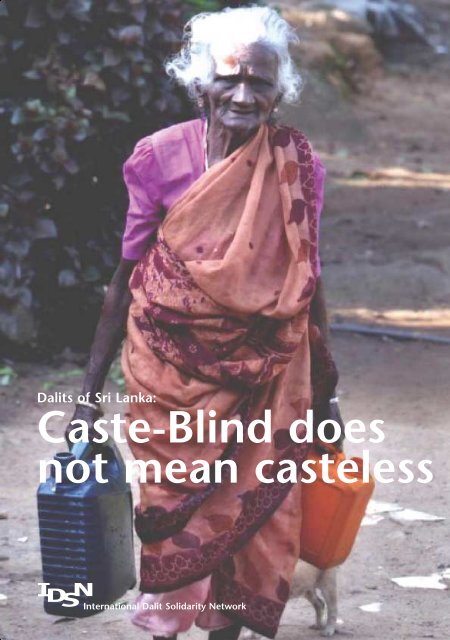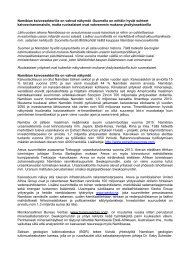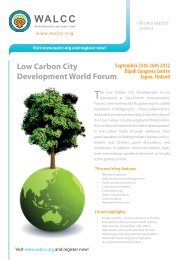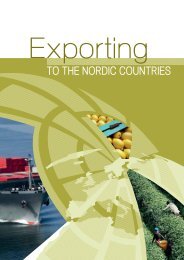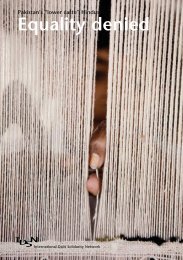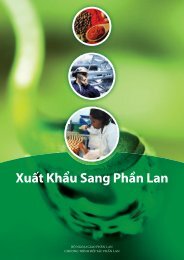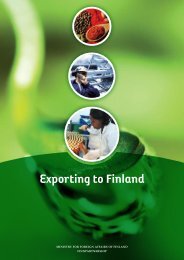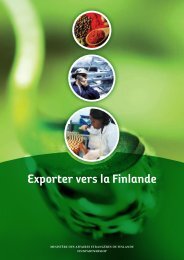Dalits of Sri Lanka - International Dalit Solidarity Network
Dalits of Sri Lanka - International Dalit Solidarity Network
Dalits of Sri Lanka - International Dalit Solidarity Network
Create successful ePaper yourself
Turn your PDF publications into a flip-book with our unique Google optimized e-Paper software.
<strong><strong>Dalit</strong>s</strong> <strong>of</strong> <strong>Sri</strong> <strong>Lanka</strong>:<br />
Caste-Blind does<br />
not mean casteless<br />
<strong>International</strong> <strong>Dalit</strong> <strong>Solidarity</strong> <strong>Network</strong>
Taboos Make Discrimination Hard to Fight<br />
<strong>Sri</strong> <strong>Lanka</strong> has three parallel caste systems, one for each <strong>of</strong> the country’s three population groups: the majority <strong>of</strong><br />
Sinhalese; the <strong>Sri</strong> <strong>Lanka</strong>n Tamils to the north and east; and the Indian Tamils who are mainly found in the tea<br />
plantations and at the bottom <strong>of</strong> the social hierarchy in towns.<br />
Most people will know to which caste they belong, but the issue is nevertheless rarely discussed publicly and<br />
is widely regarded as taboo. There is a number <strong>of</strong> reasons for this: caste-based discrimination is mild compared<br />
to other countries in South Asia and to a large extent detached from religion; there are few examples <strong>of</strong><br />
untouchability left; and during decades <strong>of</strong> civil war there has been a rise in ethnic nationalism among both the<br />
Tamils and the Sinhalese. There is now a stronger focus on what unites the various ethnic groups than on what<br />
divides them.<br />
Even though caste is now <strong>of</strong>ten regarded as an outdated concept – particularly among the young generation –<br />
and as a threat to social cohesion, all caste systems still practise various kinds <strong>of</strong> discrimination. Some underprivileged<br />
castes are denied access to religious sites and buildings while others experience discrimination based on<br />
descent and work. Certain unclean jobs such as cleaning <strong>of</strong> toilets and garbage collection are inherited through<br />
generations.<br />
The continued existence <strong>of</strong> caste-based discrimination affects about 20% to 30% <strong>of</strong> the population. This is<br />
highlighted in a new survey by <strong>Sri</strong> <strong>Lanka</strong>n researchers for the Institute <strong>of</strong> <strong>Dalit</strong> Studies (IIDS) in association with<br />
the <strong>International</strong> <strong>Dalit</strong> <strong>Solidarity</strong> <strong>Network</strong> (IDSN). The study is one <strong>of</strong> the few recent examples <strong>of</strong> academic<br />
research into the topic and describes how caste discrimination has become “underground” and “a hidden entity,<br />
not openly addressed by society”.<br />
The reluctance to deal with the issue means that the government has refused to institute quota systems or<br />
any other attempts to favour the underprivileged caste groups. The lack <strong>of</strong> focus has at the same time made it<br />
difficult for the victims <strong>of</strong> discrimination to organise themselves. This is contrary to the situation in India and<br />
Nepal which both have strong movements <strong>of</strong> <strong><strong>Dalit</strong>s</strong> or “lower castes”.<br />
While policies from abroad can not necessarily be imported, the survey concludes that “caste-blind policies are<br />
not the best way to deal with the continuing and emerging aspects <strong>of</strong> caste-based discrimination”.<br />
A Regional Study<br />
<strong>Sri</strong> <strong>Lanka</strong>'s <strong><strong>Dalit</strong>s</strong> are part <strong>of</strong> a regional<br />
study on caste-based discrimination –<br />
Casteless or Caste Blind? – coordinated by<br />
the Indian Institute <strong>of</strong> <strong>Dalit</strong> Studies (IIDS)<br />
in association with the <strong>International</strong> <strong>Dalit</strong><br />
<strong>Solidarity</strong> <strong>Network</strong> (IDSN).<br />
The regional research covers four<br />
countries — Nepal, Pakistan, Bangladesh<br />
and <strong>Sri</strong> <strong>Lanka</strong>. The landmark reports are<br />
available at www.idsn.org and<br />
www.dalitstudies.org.in.<br />
The <strong>Sri</strong> <strong>Lanka</strong>n study’s main findings are<br />
highlighted on the following pages in the<br />
“Challenges and Recommendations” section.<br />
A Word about Wording<br />
In much <strong>of</strong> South Asia, the term<br />
<strong>Dalit</strong> – “broken people” –<br />
is increasingly used to describe<br />
members <strong>of</strong> “lower castes”.<br />
But this word is rarely used in<br />
<strong>Sri</strong> <strong>Lanka</strong>. Some “lower caste“<br />
communities fear that the concept<br />
<strong>of</strong> <strong>Dalit</strong> may lead to further<br />
marginalisation.<br />
This fact sheets uses the term<br />
“lower caste” in inverted commas<br />
as the <strong>International</strong> <strong>Dalit</strong> <strong>Solidarity</strong><br />
<strong>Network</strong> rejects the concept <strong>of</strong><br />
ranking people according to castes.<br />
2
Transitions Make Space for Progress<br />
Over the last couple <strong>of</strong> decades, <strong>Sri</strong> <strong>Lanka</strong> has experienced a number <strong>of</strong> transitions that have contributed to the<br />
struggle against caste-based discrimination. In the war-affected Jaffna society, the Tamil Tigers have banned discrimination<br />
based on caste. War and the accompanying emigration and social upheavals have further loosened<br />
the grip that “upper caste” VellÇlars traditionally had on “lower caste” Panchamars. New organisations have<br />
sprung up to fight various discriminatory practices,<br />
even though some argue that the Tigers’<br />
reluctance to discuss caste issues might have<br />
silenced a more thorough struggle against the<br />
inherited inequalities and discrimination.<br />
In the tea plantations, urbanisation and the<br />
youths’ search for new opportunities in the city<br />
have created the so-called Colombo Boys: they<br />
are young people, working and studying in the<br />
capital, who reject the old caste traditions and<br />
<strong>of</strong>ten bring this new thinking back to the plantations<br />
during holidays.<br />
Influence from political movements has in some<br />
cases allowed “lower castes” among the<br />
Sinhalese in even remote villages to demand further rights from the “upper castes”; national legislation has in<br />
some instances helped members <strong>of</strong> the “lower castes” to secure land rights. The ability to work overseas – most<br />
<strong>of</strong>ten as housemaids in the Middle East – has provided alternatives to social marginalisation, even though these<br />
jobs <strong>of</strong>ten come with their own problems and injustices.<br />
War Broke Down Barriers for “Lower Castes”<br />
Caste-based discrimination in <strong>Sri</strong> <strong>Lanka</strong> has traditionally been<br />
strongest among the Tamils in the north, known as the Jaffna society<br />
after the provincial capital. Decades <strong>of</strong> war have brought further<br />
tensions and enormous suffering to this area; but for the<br />
“lower castes”, the rule <strong>of</strong> the Liberation Tigers <strong>of</strong> Tamil Elam<br />
(LTTE) has also created opportunities.<br />
The LTTE is the militant version <strong>of</strong> Tamil nationalism that grew out<br />
<strong>of</strong> a campaign for access to the temples in the 1960s. The traditionally<br />
untouchable castes – known collectively as the Panchamars<br />
– rebelled against oppression from the leading and landowning<br />
caste <strong>of</strong> VellÇlars. The Tamil nationalism thus had two aims: to<br />
fight the dominating Sinhalese; and to “heal caste wounds” within<br />
the Tamil community.<br />
Later, in the 1980s, the LTTE banned caste discrimination altogether<br />
which further eliminated a number <strong>of</strong> the accompanying practices.<br />
At the same time, however, any discussion <strong>of</strong> caste was discouraged<br />
as the Tigers needed the support from Panchamars as<br />
Making Barbers<br />
Respected Pr<strong>of</strong>essionals<br />
Upheavals in the north have made<br />
space for caste-based organisations<br />
who regard the traditional house<br />
visits by barbers to the ”upper caste”<br />
VellÇlars as demeaning and<br />
unacceptable. The organisations are<br />
trying to pr<strong>of</strong>essionalise these<br />
occupations by recommending<br />
standard fees and making it<br />
necessary for clients from all castes<br />
to visit hair salons rather than wait<br />
for the barber to make a house call.<br />
3
<strong>Sri</strong> <strong>Lanka</strong><br />
4-5 million or<br />
20-30 percent <strong>of</strong><br />
the total population<br />
well as the VellÇlars in the struggle against the State.<br />
The LTTE might in this way have silenced a broader “lower<br />
caste” struggle.<br />
The war and displacements did however force the various<br />
castes to intermingle, which made it more difficult to sustain<br />
untouchability and caste-based social distance. When the more<br />
resourceful VellÇlars fled the war zone, it created new space for<br />
the lower castes or Panchamars.<br />
In the LTTE war cemeteries, the movement has defied the caste<br />
system by erecting monuments for all martyrs side by side,<br />
irrespective <strong>of</strong> their caste. Reportedly, there are many inter-caste<br />
marriages within the movement.<br />
- But Also Increased Discrimination for Some<br />
4<br />
While the Tamil Tigers have fought caste-based discrimination as a concept, their warfare has in some cases led<br />
to further discrimination. This is not least the case among the many people who are internationally displaced by<br />
years <strong>of</strong> fighting. The worst affected are people living in camps,<br />
known as Welfare Centres, <strong>of</strong> which 81 were still operating in<br />
the autumn <strong>of</strong> 2007. These victims <strong>of</strong> war are in some places<br />
joined by survivors <strong>of</strong> the tsunami that hit large parts <strong>of</strong> Asia in<br />
2004.<br />
The IIDS study reveals that the vast majority in the centres<br />
belong to the three deprived groups among the Panchamars,<br />
namely the Nalavar (toddy tappers), Pallar (agricultural labours)<br />
and Parayar (drummers). Many <strong>of</strong> them report that they are not<br />
welcome in the local temples, <strong>of</strong>ten owned by members <strong>of</strong> the<br />
VellÇlars, and they can’t go back to their own temples in areas<br />
that are now under control <strong>of</strong> security forces.<br />
Access to water is another problem. Each welfare centre has<br />
one or two small wells for a large number <strong>of</strong> families. This is not<br />
enough to fulfil their daily needs for water. The internally<br />
displaced people are thus forced to seek water from their<br />
neighbours. These are <strong>of</strong>ten VellÇlars whose wells the<br />
Panchamars – who are considered “unclean” – are not allowed<br />
to touch. They are therefore at the mercy <strong>of</strong> the VellÇlars and<br />
have to rely on them to provide water.<br />
Why “Lower Castes”<br />
end up in Camps<br />
“Lower castes” – such as the<br />
Panchamars – are more likely to end<br />
up in camps following war and natural<br />
disasters such as the 2004 tsunami. There<br />
are several reasons for this:<br />
traditionally, they don’t<br />
own land and become absolutely<br />
landless when they are displaced;<br />
they typically don’t have networks<br />
outside their own communities to accommodate<br />
them; most <strong>of</strong> them<br />
don’t have resources to buy their own<br />
land or shelter elsewhere – and even<br />
when they have, they might meet<br />
resistance to sell among “higher castes”<br />
or VellÇlars.
On a more positive note, the emigration <strong>of</strong> many VellÇlars has made more <strong>of</strong> their land available. In some cases,<br />
Panchamars are able to buy it with the proceeds from remittances from relatives abroad. However, the<br />
Panchamars do complain that they <strong>of</strong>ten have to pay an extra amount to be allowed to buy the land from the<br />
“upper castes”.<br />
Sanitation Workers Forced to Live in Dirt<br />
On the outskirts <strong>of</strong> the hill town <strong>of</strong> Kandy, Mahaiyawa is a community suffering from an<br />
enormous paradox: the inhabitants are descendants <strong>of</strong> labourers who were imported from<br />
India in the 19th century to clean the town’s streets and toilets; the community has had<br />
this responsibility ever since, and now as municipal workers. Yet the municipality has never<br />
bothered to secure proper sanitation in Mahaiyawa itself.<br />
With faeces occasionally streaming down the roads during rains, the community struggles<br />
with poor hygiene, low social esteem and discrimination from the rest <strong>of</strong> the town. This<br />
makes Mahaiyawa a visible expression <strong>of</strong> the mix <strong>of</strong> caste-based, social and ethnic discrimination<br />
that has kept the majority <strong>of</strong> <strong>Sri</strong> <strong>Lanka</strong>’s Indian Tamils at the bottom <strong>of</strong> the social<br />
hierarchy.<br />
The establishment <strong>of</strong> Mahaiyawa had all to do with caste. In the 1920s, Parayans (sweeper<br />
caste) and Chakkiliyan (toilet cleaning caste) were settled in the section known as MC,<br />
short for Municipal Council Quarters. Later, Mahaiyawa MT (for Model Tenement), with its<br />
slightly better accommodation, was built for their “higher caste” supervisors. MT is today<br />
a broad mix <strong>of</strong> Tamils, Sinhalese and Muslims while MC has remained an overcrowded<br />
ghetto for primarily “lower castes”.<br />
Even though caste-based discrimination has diminished in recent years, the inhabitants <strong>of</strong><br />
Mahaiyawa MC are still denied access to some temples and better schools. While the former is caste-based, the<br />
latter seems to have more to do with their address in Mahaiyawa. The inhabitants themselves regard caste as an<br />
outdated concept which many <strong>of</strong> them refused to discuss with the researchers <strong>of</strong> the IIDS study. The dynamics<br />
do seem somewhat more complex. Historically, caste-based notions <strong>of</strong> untouchability placed the community at<br />
the lowest level <strong>of</strong> society. Present-day social and ethnic exclusion cemented this inherited poverty and powerlessness.<br />
The study concludes that the most recent analysis and attempts to improve the conditions in Mahaiyawa MC<br />
have turned a blind eye to caste discrimination. However, the issue can not be addressed in isolation and there<br />
is a need to include caste among other factors in any attempt to tackle the social exclusion and denial <strong>of</strong> rights<br />
for the sweepers and cleaners <strong>of</strong> the community.<br />
Excluded from the Benefits <strong>of</strong> the Majority<br />
The village <strong>of</strong> Henawala in central <strong>Sri</strong> <strong>Lanka</strong> is renowned for its mat and carpet weaving and for its dusters that<br />
are widely used to beautify other communities in the area. The villagers’ craft is inherited over generations but<br />
the same can be said about the social exclusion <strong>of</strong> the Kinnara population <strong>of</strong> Henawala. As is the case with so<br />
many other “lower castes”, their services to society are appreciated while they themselves are not.<br />
The mat-weaving Kinnaras were traditionally one <strong>of</strong> the “oppressed castes” among <strong>Sri</strong> <strong>Lanka</strong>’s majority <strong>of</strong><br />
Sinhalese with a duty to deliver mats and ropes to the royal families. Not much changed in these dynamics with<br />
the advent <strong>of</strong> democracy, even though the intensity <strong>of</strong> the discrimination diminished and the entire notion <strong>of</strong><br />
caste became progressively less prominent.<br />
While the Sinhala caste system always has been seen as mild in comparison with the one practised by Hindus, it<br />
did however leave the “lower castes” with a high degree <strong>of</strong> poverty due to breakdown <strong>of</strong> traditional patron-client<br />
relations, limited rights and access to land and rapid population growth following the eradication <strong>of</strong> epidemic<br />
diseases. 5
As the villagers <strong>of</strong> Henawala told researchers for the IIDS study, a number <strong>of</strong> other characteristics <strong>of</strong> caste-based<br />
discrimination are also still in place: they are unable to move out <strong>of</strong> the community because the organisation <strong>of</strong><br />
the production <strong>of</strong> mats and carpets makes them interdependent – some source the materials, some weave, and<br />
some are responsible for distribution. The schools in the area discriminate against their children – and they don’t<br />
believe much in education in any case as they have no faith in anyone giving a job to a Kinnara. Inter-caste marriages<br />
are frowned upon by “higher castes”, and the outside person usually has to join the Kinnara community.<br />
The IIDS study reveals similar experiences among other “lower castes”. Denial <strong>of</strong> access to temples and exclusion<br />
from political parties and organisations are still practised; some villages have their own internal hierarchy based<br />
on caste. While the issue <strong>of</strong> Sinhala castes is not <strong>of</strong>ten discussed openly, there have been examples <strong>of</strong> youth, from<br />
some “lower castes”, who have mobilised politically on the basis <strong>of</strong> their social exclusion and their demand to be<br />
recognised for more than just their services to society.<br />
Colombo Boys Bring Progress to Tea Estates<br />
<strong>Sri</strong> <strong>Lanka</strong>’s world famous tea is picked by Tamils who are among the most marginalised workers in the country.<br />
They were imported by the British from India and so was their caste system as an integrated part <strong>of</strong> their Hindu<br />
religion. As members <strong>of</strong> “lower castes” and as Tamils in a Sinhala-dominated society, they have traditionally suffered<br />
double discrimination. But as their younger generations become exposed to a world outside, they are presented<br />
with alternatives to caste-based and social discrimination.<br />
The tea estates modified the caste system for their own<br />
purpose: workers from “lower castes” were controlled<br />
by “upper caste” Kanganies (labour supervisors) who<br />
<strong>of</strong>ten also became trade union leaders. A repatriation<br />
programme in 1968 partly undermined this division. A<br />
large number <strong>of</strong> Kanganies returned to India which created<br />
more opportunities for workers from the “lower<br />
castes” to become leaders <strong>of</strong> trade unions and political<br />
parties.<br />
Since the domination by “upper castes” always had<br />
more to do with the organisation <strong>of</strong> labour than with<br />
untouchability based in religion, discrimination has<br />
rarely included denial <strong>of</strong> access to water, education and<br />
health services. During visits to tea estates, researchers for the IIDS study had to interview women in their sixties<br />
to get an overview <strong>of</strong> the number <strong>of</strong> workers belonging to each caste. The men felt that caste had nothing to do<br />
with their daily life. The youth refused to take up caste-related occupations such as washer men and barbers<br />
because <strong>of</strong> the stigma associated with these jobs. Among the few remaining taboos are inter-caste marriages and<br />
the prohibition for “high castes” to eat in the houses <strong>of</strong> “lower castes”.<br />
Some <strong>of</strong> these changes are inspired by the so-called “Colombo boys”, young men from the estate who work and<br />
study in the capital. When they come home for visits, they bring back norms from the outside world; during<br />
festivals and funerals they deliberately disregard caste altogether. They will do tasks that were previously reserved<br />
for certain castes as a contribution to the community. In the city, many <strong>of</strong> the Colombo boys marry outside their<br />
own caste. Initially, this <strong>of</strong>ten causes friction with their parents, but when the first child is born, the tensions typically<br />
reduce. This all lends some hope that increased awareness can do away with the remnants <strong>of</strong> caste-based<br />
discrimination and possibly even encourage the plantation workers to question their inherited status at the lowest<br />
level <strong>of</strong> society.<br />
6
CHALLENGES AND<br />
RECOMMENDATIONS<br />
Background<br />
<strong>Sri</strong> <strong>Lanka</strong> has three parallel caste systems: Sinhala, <strong>Sri</strong> <strong>Lanka</strong>n Tamil and Indian Tamil. All have some kind <strong>of</strong><br />
caste-based discrimination, but caste is a taboo in contemporary <strong>Sri</strong> <strong>Lanka</strong> and not <strong>of</strong>ten discussed or<br />
researched. 90% <strong>of</strong> the population does however recognise caste for some purposes. Caste sentiments have<br />
been used to organise social and political movements and are <strong>of</strong>ten used in election campaigns.<br />
Welfare policies <strong>of</strong> the government from 1930 onwards assume universal coverage in providing services; no<br />
reservations <strong>of</strong> any kind have been introduced to address hereditary disadvantages <strong>of</strong> the deprived caste<br />
groups. The depressed communities themselves have only a few and relatively small organisations to address<br />
the issues. In most instances they deny and ignore the problems they face rather than dealing with them;<br />
instead they choose other strategies such as overseas migration, migration to cities or new settlements and<br />
change <strong>of</strong> name.<br />
Caste Discrimination in Sinhala Society<br />
While the Sinhala caste system is regarded as less severe than the Hindu version and does not entail untouchability,<br />
there are certainly underprivileged caste groups with a higher degree <strong>of</strong> poverty, limited access to<br />
land, limited opportunities for advancement and limited contact with the State apparatuses. They may not be<br />
deprived <strong>of</strong> basic necessities like drinking water but are <strong>of</strong>ten excluded from services such as free education.<br />
The socially excluded Sinhala caste groups are spatially dispersed and organisationally weak. Less than 1%<br />
comes from the “outcaste” category, but if traditionally disadvantaged service castes are included, as much as<br />
30% <strong>of</strong> the Sinhala population may be experiencing some kind <strong>of</strong> caste-based discrimination.<br />
Caste Discrimination in War-Affected Jaffna Society<br />
The most severe forms <strong>of</strong> untouchability and caste discrimination in <strong>Sri</strong> <strong>Lanka</strong> have been reported in the Jaffna<br />
society <strong>of</strong> Tamils. “Low caste” resistance from 1920, combined with population displacement, outward migration<br />
and the general social breakdown during the war, has, however, led to considerable erosion <strong>of</strong> caste<br />
discrimination. This has been compounded by an outright ban instituted by the Liberation Tigers <strong>of</strong> Tamil Elam.<br />
However, the preponderance <strong>of</strong> “low caste” members in camps for internally displaced people (IDP) and the<br />
treatment they experience from the neighbouring “high caste” communities indicate some degree <strong>of</strong> continued<br />
caste discrimination.<br />
The social movement against caste discrimination, which in some ways paved the way for the current developments<br />
in Jaffna society, has been co-opted and more or less silenced by the LTTE. Caste is seen as, at best, an<br />
unnecessary diversion and, at worst, a threat to political and social unification <strong>of</strong> the desired Tamil nation.<br />
7
Caste Discrimination among Indian Tamil Plantation Workers in <strong>Sri</strong> <strong>Lanka</strong><br />
The patterns <strong>of</strong> bonded labour in the plantations traditionally utilised caste-based divisions <strong>of</strong> labour;<br />
Kanganies (supervisors) were mainly “higher caste” Kudiyanavars while the workers were from “lower castes”.<br />
However, they shared resources like water, Kovil (temple) and accommodation.<br />
Homogeneity among worker families eroded the notion <strong>of</strong> untouchability. Trade unions to some extent<br />
replaced the role <strong>of</strong> castes. Ethnic marginalisation and outbursts <strong>of</strong> ethnic riots where the Indian Tamils<br />
became victims made them forge a new “Malaiyaha” (“hill country people”) identity to assert their cultural<br />
distinctiveness. Ethnic solidarity was strengthened as distinct from caste identity. The concept <strong>of</strong> “Malaiyaha”<br />
allows the “upper castes” to forge vertical ties with the “lower castes”, while the “lower castes” can redefine<br />
their identity in a more respectable manner in ethnic rather than caste terms.<br />
Urban Untouchability: The Condition <strong>of</strong> Sweepers and Sanitary Workers in Kandy<br />
The Mahaiyawa community in Kandy is an urban ghetto with a complex mix <strong>of</strong> underclass, outcaste and<br />
ethnic enclave characteristics. The inhabitants are descendants <strong>of</strong> “lower caste” workers who were imported<br />
by the British from India to sweep streets and clean toilets.<br />
Today the community is an example <strong>of</strong> the cumulative impact <strong>of</strong> social exclusion and discrimination over<br />
many decades that keep <strong>Sri</strong> <strong>Lanka</strong>’s urban Indian Tamils in poverty and powerlessness. While explicit caste<br />
discrimination has decreased over the years, urban untouchability has continued unabated due to caste<br />
origin, derogatory occupations inherited from the past, ethnic enclave atmosphere, population congestion,<br />
social vices and environmental and health hazards. As these problems are closely interconnected, they need<br />
to be addressed in a comprehensive manner.<br />
Recommendations:<br />
Government, civil society organisations and international donors should explicitly recognise the existence <strong>of</strong><br />
caste-based discrimination and plan for policies, legal measures and administrative measures to prohibit<br />
discrimination based on work and descent. Existing legislation must be reviewed and strengthened where<br />
necessary. The government must honour its international human rights obligations and report to the United<br />
Nations treaty bodies on a regular basis.<br />
It is not advisable to follow caste-blind policies as pockets <strong>of</strong> caste-based discrimination make caste an<br />
important policy issue. Reservation policies favouring underprivileged castes may not be advisable or feasible<br />
as they may revive caste consciousness and related conflicts. Alternative means <strong>of</strong> addressing existing gaps<br />
through targeted interventions must be explored, for instance in relation to education. Local government<br />
agencies must be encouraged to improve the living and working conditions <strong>of</strong> sanitary workers through<br />
adoption <strong>of</strong> improved technologies, safety measures and development <strong>of</strong> career paths extending beyond<br />
caste-specific employment.<br />
Caste must be explicitly addressed in social impact assessments and monitoring and evaluation <strong>of</strong> development<br />
programmes. The National Human Rights Commission must pay greater attention to violation <strong>of</strong><br />
human rights on the basis <strong>of</strong> caste and related factors in matters such as education, access to land, drinking<br />
water and places <strong>of</strong> worship, and denial <strong>of</strong> political rights.<br />
Caste is not a variable in any <strong>of</strong>ficial data collection or database which makes it impossible to monitor<br />
progress or adverse outcomes relating to caste-based discrimination. Because <strong>of</strong> widespread denial, it may be<br />
difficult to introduce cast as a variable, but agencies working for “lower caste” communities can include caste<br />
in their project monitoring.<br />
The absence <strong>of</strong> a common name such as <strong>Dalit</strong> may be an important obstacle to a common identity and<br />
interaction among “lower castes”. But the term may not be acceptable in <strong>Sri</strong> <strong>Lanka</strong> due to its external origin.<br />
The appropriateness <strong>of</strong> this or any other common identity should be explored. The civil society organisations<br />
working with “lower caste” communities should share their experiences across the ethnic divide. It may also<br />
be useful to share experiences with <strong>Dalit</strong> activists in the rest <strong>of</strong> South Asia. There is a need for further research<br />
on the topic to inform policies.<br />
Design by Anette Oelrich.<br />
PUBLISHED BY IDSN, SECOND EDITION, JUNE 2008.


